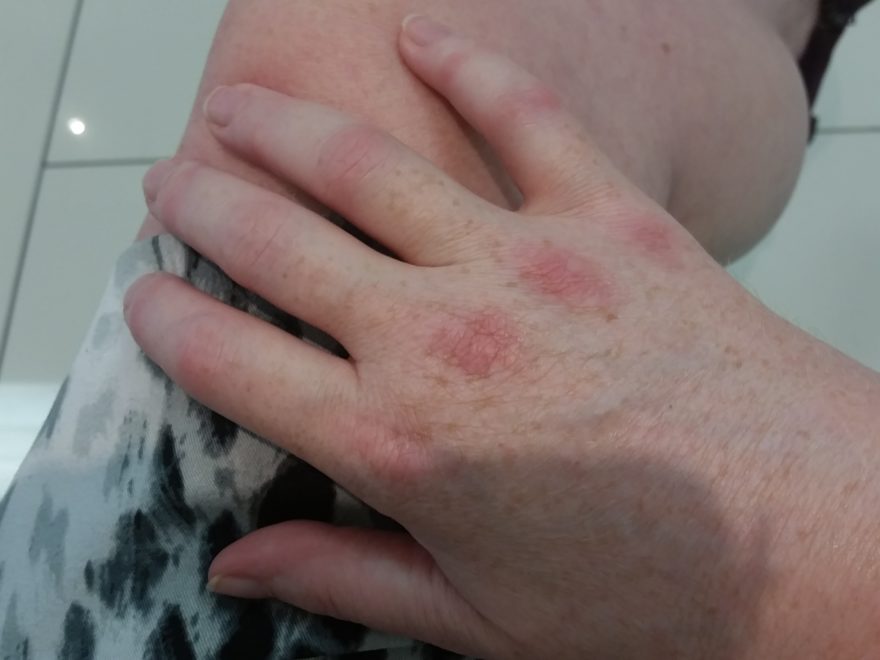My diagnosis, a rare neuro-inflammatory disease, was almost a year ago. It was triggered by a simple broken arm, a Colles’ fracture, in early March 2016. Despite having obvious clinical signs, in addition to my self-reported symptoms – that something was wrong back then – an orthopedic surgeon dismissed them. Dismissed me, really.
He’d been assigned to my follow-up care by the hospital, even though I didn’t need post-fracture surgery. I really think, looking back on it now, that he simply had no interest in my case – because he’s a surgeon, and I didn’t need surgery.
And that disinterest – or disregard – for me, as his patient, meant that my disease went undiagnosed for (almost) three months. During that time, the disease had time to spread, to get worse, and (as I found out much later) it became potentially permanent.
From a simple broken arm, I’m now faced with a potentially permanent life-changing disease. A condition that might have been curable, if it had been diagnosed and treated when my symptoms first started. That’s really difficult to live with.
This year, I’m going through the emotional exercise of looking back at my detailed notes from that time. A period during which I knew that something was wrong, but was unable to get this hospital-assigned specialist to even look at my hand.
And I’ve decided to share some of the inappropriate (bad!) medical advice that this orthopedic surgeon gave me; all the while pretty much refusing to acknowledge that anything was wrong.
At this time last year, on April 28, 2016, I had my third appointment with this particular orthopedic surgeon. I’d already called the hospital to ask to see another physician in the orthopedics department, or even for a second opinion, and was told I couldn’t switch doctors.
It was an unplanned follow-up appointment, which I’d requested for several reasons. First off, my physiotherapists were very concerned that the fingers of my right hand were still very swollen. Second, they’d noted that my finger joints were also getting progressively stiffer. Getting worse, not better.
Third, I (still) had red stripes or spots running across each of the joints of my hand; often a sign of inflammation. Finally, the burning pain that had started in my fingertips had, by then, spread further up each finger; by the end of April it had spread as far as my knuckles.
What medical advice did this disinterested and dismissive orthopedic surgeon give me, this time last year? For a patient with my clinical signs and symptoms?
- Take Aleve, an over-the-counter pain reliever
- Use Voltaren emulgel
- Soak my hand in very hot water, and try to force or unblock my finger joints in the water
Which of these were inappropriate (bad!) medical advice? First off, I was already taking Aleve, and it wasn’t helping at all. Next, the Voltaren made the burning sensation, on my skin, worse. I later found out that this type of extreme skin sensitivity is a form of neuropathic pain called allodynia.
Finally, soaking my hand in hot water made the swelling worse. The additional swelling, of course, made the pain much worse as well. Rather than improving my symptoms and clinical signs, this particular advice made them worse.
All this doctor would have had to do, to realize that something really was wrong with me after a simple fracture, was to look at the stripes on my hand:
CRPS is a neuropathic, often treatment resistant, non-malignant pain syndrome.
Early diagnosis is essential for a good clinical outcome…
A manifestation of long-standing swelling can be patchy skin discoloration attributed to leaky blood vessels near the skin surface, allowing red blood cells to enter the skin and release rust-colored iron-containing molecules”(1).
This isn’t the end of this story, but it’s all I have in me to write about today. Thanks for stopping by the blog, and for sharing my patient journey. Have a lovely day, and a happy spring season!
This isn’t the end of my story about this particular doctor, but it’s all I have in me to write about today; it’s heartbreaking to look back on this, knowing that if I’d been diagnosed sooner there’s a good chance my CRPS would have resolved – gone away – by now.
And I do want to say that all of the other physicians with whom I’ve dealt since then have been absolutely fantastic!
Thanks for stopping by the blog, and for sharing in my patient journey. Have a lovely day, and a happy spring season!
Reference
(1) Skin Hyperpigmentation in Complex Regional Pain Syndrome (CRPS). Robert Knobler. Neurology. 08 Apr 2015: 84 (14 Supplement) P3.315. Online. Accessed 28 Apr 2017. Web:
https://n.neurology.org/content/84/14_Supplement/P3.315

